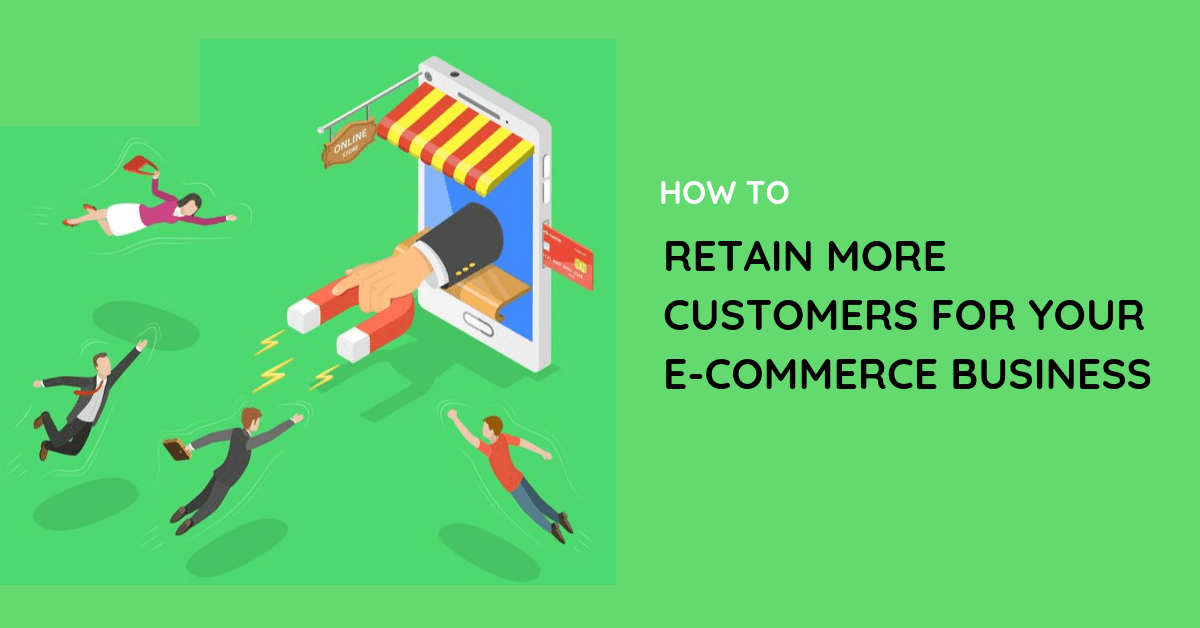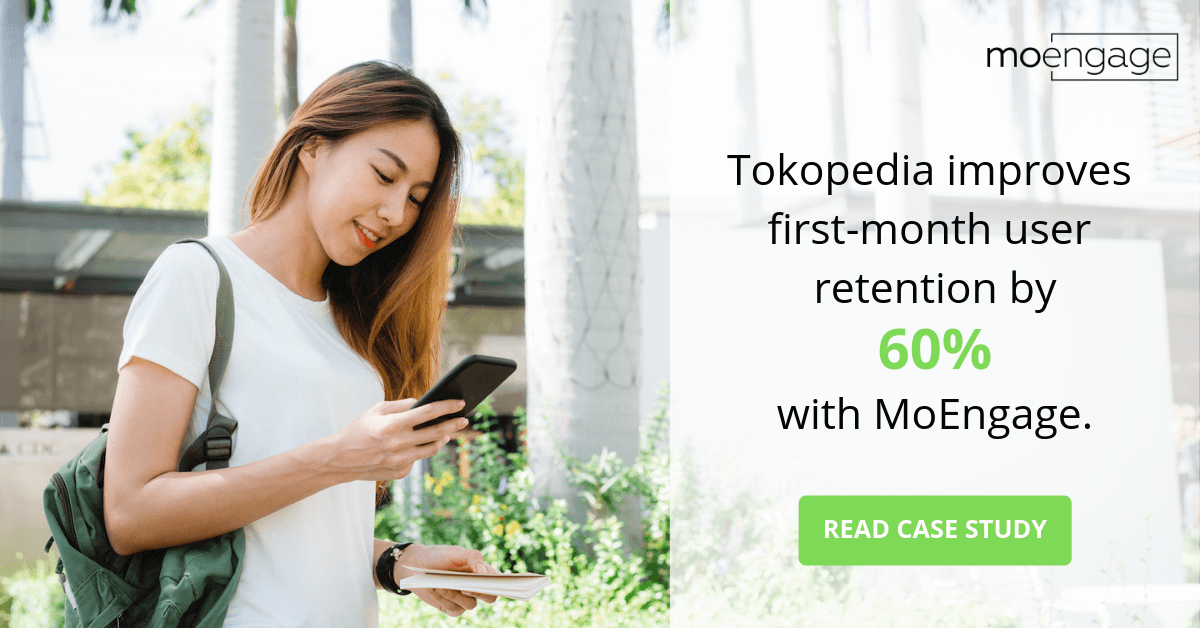How to Increase Repeat Purchases for your E-Commerce Business

Reading Time: 6 minutes
Bonus 👉 Learn How Lifestyle Improves Customer Retention by 30% – [Download Case Study] |
What makes companies like Netflix or Amazon valuable?
Yes, they are massive platforms with tons of customers… however, they derive a large portion of their revenue from subscription income. Netflix wins over new customers and almost never has to market to them again. Amazon signs users up to Amazon Prime and leverages that revenue to reinvest in improving logistics and other aspects of their platform.
The good news is you can take this lesson and apply it to your own e-commerce business. As an e-commerce marketer, you should be constantly asking yourself “How do I make sure this customer comes back again?” A large part of this comes from improving customer experience and leaving every customer with a positive experience of your store.
Getting repeat customers who continually return to make more purchases is 5x cheaper than constantly farming new customers. This is true for a few reasons. First, your ad costs are almost non-existent and the customer doesn’t need to be persuaded nearly as much. Second, it is possible to burn out an audience, which means your engagement goes down and the cost per action goes up. If this isn’t enough to convince you, you can also count on these customers leaving positive reviews that make it even easier for you to sell to your next customer.
The focus on customer retention won’t come until you’ve become a more established store, but when it does, you’ll want to revamp your strategy away from customer acquisition and implement new strategies that do a better job of creating repeat customers.
Therefore, the idea is to get loyal customers who will continue to come back at zero cost to you. This is why there is such power in loyalty programs, and why so many e-commerce companies have begun to prioritize the customer experience.
How to Improve Customer Retention
#1 Onboarding: To improve customer experience, you want to find personalized ways to communicate with the customer. A big part of this is making them feel good about the purchase they just made by providing them relevant updates. This could mean sending them through a welcome sequence that interests them and actually adds value to the product they just purchased.
| Implementation Tip: For users who have just purchased a fitness product, share a quiz that helps them figure out what sort of workout program they would like to follow. Or send a detailed explanation of how to set up and use an electronics product the customer just purchased. Both of these situations would be welcomed by the customer and improvement their engagement significantly.
E-commerce marketers have to make it their job to improve this aspect of the user experience. Not only will this make it more likely that users purchase again, but it will decrease the refund rate. |
#2 Incentivize: Alternative approach companies could take is incentivizing the customer to make a second purchase. This is a more direct form of engagement, but giving the user a coupon or discount code that would apply to their second purchase is a great way to get them coming back.
Ideally, you have a discount strategy in place that doesn’t devalue the product by offering a discount on it. Otherwise, the customer automatically assumes this means the product is worth less than the price you are charging for it. This is why it helps to explain what you’re doing and why you’re giving the discount. Using phrases like “loyal customers” helps, and you should also not overwhelm your customer with discounts to the point where they expect them.
| Implementation Tip: All it takes is a simple email to retarget your customers, and the results can be highly profitable. As we mentioned earlier, customers who make a second purchase are far more likely to make a third purchase (and so on).
Offering a discount for bulk or loyalty is another route you can take. Amazon does this by offering a 10-15% discount on products if the purchaser opts for “Subscribe and Save.” |
#3 Abandoned cart: These emails are already common practice in the industry, but you can specially customize these for returning customers. However, there are multiple ways to make this email more effective.
| Implementation Tip: Not only do you know what they were about to purchase when they returned to your website, but you know what they purchased in the past. If they’ve left a review, this can be included in the abandoned cart notification, and you can even recommend other products that are a good fit with the products they already own. |
#4 Surpassing Customer Expectations: Customers expect to be sold to and are almost desensitized to it at this point. If you can find a way to move away from the transactional short-term type of marketing to a longer-term emotional relationship with your customers, this will pay massive dividends in the future.
| Implementation Tip: This is a large part of why we recommend the use of personalized engagement with existing customers. They appreciate it and helps differentiate you from the rest of the brands they are engaging with. You never want to be competing purely on price, and these relationships help you sidestep this price war so you can focus on a trusting relationship with your customers.
Prioritizing different channels is another key aspect of these personalized campaigns. Users have different communication patterns, and to get the repeat purchase, it is necessary to re-adjust based on which channels they are responding to. By having a campaign that adapts to the single consumer rather than the expected reaction of an entire cohort, the conversion rate is greatly increased. |
Real-world Examples of Customer Retention Campaigns Done Right
MoEngage has worked with numerous brands to help them increase their Customer Lifetime Value and user retention.
One key example is how we worked with Tiket.com. They are one of the pioneer Online Travel Agents (OTA) in Indonesia. They offer an all-in-one reservation system, making them the perfect choice for booking flight tickets and hotels online. Their booking flexibility and uniformity allows them to actively acquire new users through multiple channels
The challenge that Tiket.com faced was to bring their mobile users to the app for repeat purchases. The growing number of dormant users was the other worry for the brand.
Tiket.com used MoEngage to activate its customer engagement strategy. They segmented customers based on purchase history, category purchased and recency of app usage; then used MoEngage Flows to automate cross-channel campaigns to these segments. They engaged users through email and push notifications. Using MoEngage’s recommendation engine, they personalized their offers based on the user’s browsing behavior to reduce abandonment. This strategy collectively helped Tiket.com to offer a personalized user experience to every user on their app and improve purchases, repeat purchases, and reduce user churn.
Often, companies don’t properly personalize their customer communications and miss a key chance to get the next sale. These types of lifecycle campaigns are important because of the consistent income they are meant to bring in.
Many times, users don’t even open emails containing coupon codes that are already in their inbox. This is why it becomes necessary to build contextual conversations at every point in the customer’s journey. This strategy worked very favorably with Tiket.com and shows the power of 1 to 1 communication.
In a slightly different situation, MoEngage worked with Tokopedia, a Southeast Asian e-commerce giant, to improve first-month user retention by 60%. This might not have involved online sales, but the same principles apply in terms of improving the repeat customer rate.
Users would commonly uninstall the application after the first month, but by implementing a series of integrated cross-channel campaigns that targeted users with messages across owned and paid channels such as Push, Email, SMS, and Ad-retargeting, they were able to increase customer retention. This just goes to show that the same principles of personalized communications that reflect a customer’s specific situation are the best way to engage with customers.

What Does It All Mean?
Every time a customer makes a purchase from a store, they are even more likely to make the next purchase. A habit forms and they continue to return when they need products that the store provides.
We’ve gone into detail on how you can get the repeat purchase, and shown what MoEngage does with their clients to increase Customer Lifetime Value.
We have several products that are focused on improving the retention rate of customers by giving them a better experience.
The top priority for e-commerce marketers should be to get that repeat purchase and turn all their customers into consistent buyers. Only by doing this will these companies be able to bring about consistent growth and turn customers into assets.
Here’s What You Can Read Next |








